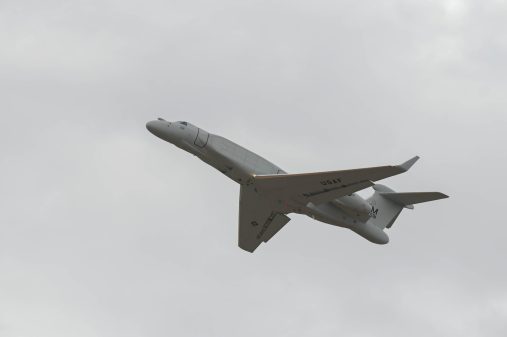F-15 EPAWSS system passes critical milestone

An electronic warfare system that will enable decades-old Air Force F-15 fighter jets to remain survivable against sophisticated threats passed a critical milestone, its contractor announced Tuesday.
The Eagle Passive Active Warning Survivability System (EPAWSS) completed initial operational test and evaluation (IOT&E) with the Air Force, its manufacturer BAE said.
“EPAWSS was designed for upgradeability and rapid capability insertion,” Amy Nesbitt, EPAWSS program manager at the company, said in a statement. “We’re using agile software development to provide iterative upgrades to fielded EW systems — allowing our customers to defeat future electromagnetic threats.”
With advances in enemy sensing, radar and jamming tools, U.S. assets must be able to better protect themselves and jam enemy platforms.
EPAWSS provides full spectrum electronic warfare capabilities to include radar warning, geolocation, situational awareness and self-protection, all of which ultimately enable deeper penetration into battlespaces protected by advanced integrated air defense systems.
“EPAWSS is a leap in technology, improving the lethality and combat capabilities of the F-15E and F-15EX in contested, degraded environments against advanced threats,” Maj. Bryant “Jager” Baum, EPAWSS test director for the Air Force Operational Test and Evaluation Center, said in a statement. “EPAWSS has set the baseline for EW within the fighter community.”
The system was recently demonstrated at Northern Edge 23, an Indo-Pacific Command-focused exercise involving the joint services to focus on interoperability in a realistic scenario, showcasing EPAWSS’ discrimination electronic warfare capabilities to include so-called cognitive EW. The term “cognitive EW” refers to a system’s ability to rapidly understand new threats and counter them without human intervention.
The event also provided the opportunity to test the system’s prowess in responding to novel electromagnetic threats, BAE said. Northern Edge challenged EPAWSS’ ability to process in-mission sensor data, create exquisite techniques and optimize waveforms in real-time while forcing the system to execute the tasks in a dense, unpredictable electromagnetic spectrum at a theater exercise level.






